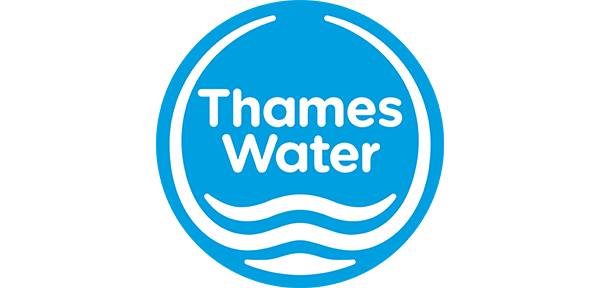Proactively delivering data sharing requirements with one single, end-to-end platform solution
Thames Water has proactively addressed the needs of its data sharing requirements by building an end-to-end geospatial portal, centralising data sources, allowing for internal and external stakeholder feedback, interaction and knowledge sharing all of which are helping to shape and drive commercial decision-making.
Datasets from multiple sources are centralised giving internal and external stakeholders one single view of all data
Access to previously hidden insights supports evidence-based analysis and more confident predictive modelling
Improved business efficiencies include massive time savings with internal requests now delivered in weeks rather than six months
The Challenge
Responsible for moving seven billion litres of water and wastewater as part of its daily water cycle, through 31,000km of managed water mains and 109,400km of managed sewerage mains, Thames Water serves 15 million wastewater customers across London and the Thames Valley.
Its ability to extract and gain optimum value from different data sources is integral to supporting its ability to extend, improve and maintain robust and resilient drainage and wastewater systems while fulfilling its regulatory requirements, including the Drainage and Wastewater Management Plan (DWMP). Regulatory body Ofwat also requires water companies to demonstrate open and trustworthy data ecosystems.
At the outset of developing its data sharing portal, Thames Water was faced with colossal amounts of data from a multitude of internal and external sources. “We had so much data only available to a small group of users, it was difficult to visualise or understand it,” said Graeme Kasselman, London System Planning Lead. To solve this complex challenge the company identified the need for a technology platform that could incorporate this data all in one place and give internal and external stakeholders the ability to analyse and inform predictive planning, while providing the public with an engagement portal to provide their input.
“ArcGIS and Data Interoperability extension was fundamental to converting complex hydraulic modelling outputs into spatial insights that could then be shared with key stakeholders.”
Zeshan Alli, GIS Specialist, Asset Strategy & Planning, Modelling & Insight, Thames Water
The Solution
In the co-creation of its DWMP, Thames Water worked with around 2,000 partner organisations and stakeholders on national, regional and local levels as well as the general public. To fulfil its DWMP obligations, Thames Water identified three critical deployments that could be built using ArcGIS Enterprise for internal and ArcGIS Online for external data management, access and collaboration.
These deployments needed to be quick and streamlined, offer different levels of access and be easy to update. “We have a principle within our teams to use COTS products, though we also need the ability to deliver on specialised requirements,” said Louise Bates, GIS Architect for Thames Water.
The System Planning Portal, the heart of the data sharing portal, resides in ArcGIS Enterprise and provides the single, central data repository. The GIS team used ArcGIS Pro and ArcGIS Data Interoperability Extension Tool to perform the detailed analysis required and then prepare the data, which was passed to the platform team to publish content including layers, services and maps in the apps, making it securely available to a wider internal audience. This System Planning Portal also ensures that the DWMP is reflective of the combined views of technical specialists incorporating external datasets like the CAMELLIA (Community Water Management for a Liveable London) project.
The Practitioners DWMP Portal is an external enterprise platform, using data from the System Planning Portal. Views are replicated from the System Planning Portal, such as hotspots, but with anonymised data attributes thereby preventing the release of data which may have an adverse impact on an individual or property.
This partnership working tool ensures that the DWMP is reflective of the combined views of technical specialists especially Lead Local Flooding authorities and River Catchment Partnerships, while optimising overall efficacy of the plan.
The Customer Portal, built in ArcGIS StoryMaps is an external public resource giving non-specialists the ability to view the DWMP, gain access to data and input ideas and share data. A series of interactive maps provide complete transparency of reporting from initial catchment screening and risk assessments to the main outputs of the final plan.
“By taking a geospatial approach, our portal confidently shows how citizen engagement and stakeholder involvement can influence and inform commercial activities, for the benefit of all parties.”
Graeme Kasselman, London System Planning Lead (Wastewater), Thames Water
Benefits
Optimising value from data
Diverse datasets from multiple sources are now centralised in one single, end-to-end solution, giving users the ability to analyse, plan and undertake predictive modelling fundamental to the evolution of the DWMP. Different layers can be analysed that show previously hidden insights, helping the business to better understand what it needs to do to support better operational performance and improve customer satisfaction.
Enhancing stakeholder involvement
The System Planning Portal, Practitioners DWMP and Customer Portals all deliver on data sharing requirements which include access to comprehensive, evidence-based and transparent data. Internal and external stakeholders are empowered with unprecedented, secure access to the same data, analysis and views while the general public can interrogate, interact with and share data for submission.
Improved business efficiency
ArcGIS Enterprise and ArcGIS Online mitigate the need for different software solutions and the GIS team now has the tools and views making it easier to implement updates. Ready-to-go capabilities and tools limit the need for coding, so that internal requests can be responded to in a matter of weeks rather than six months, helping to add value to the business.
Driving collaboration with stakeholders
Both portals and the ArcGIS StoryMap are driving collaboration both internally and externally. Stakeholders have access to the same data, though at different levels of detail for optimal security, enabling the company to present a fully transparent, evidence-based picture of its operations and future planning frameworks to all its stakeholders, while addressing regulatory requirements.



